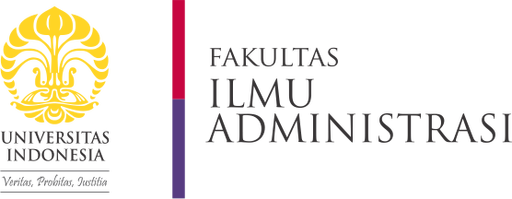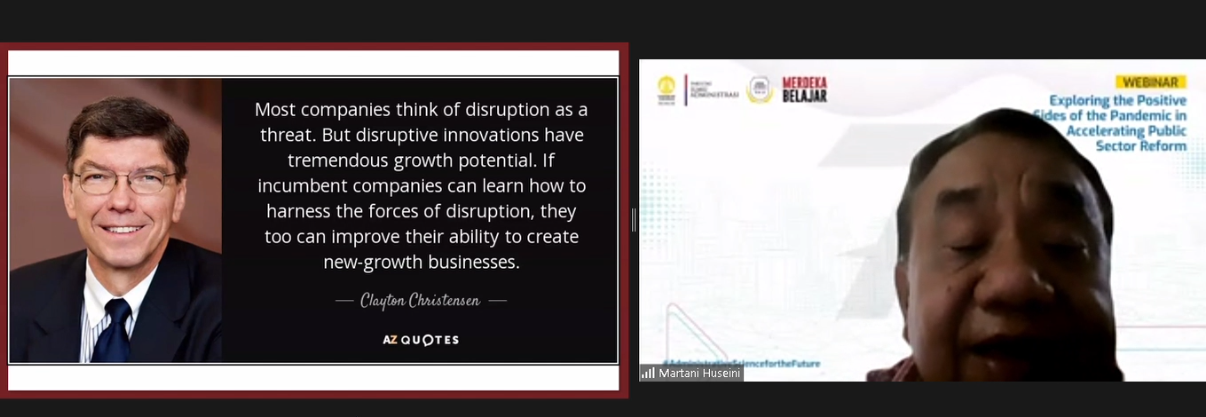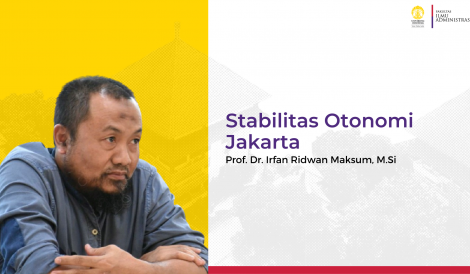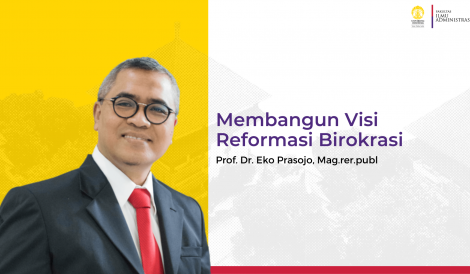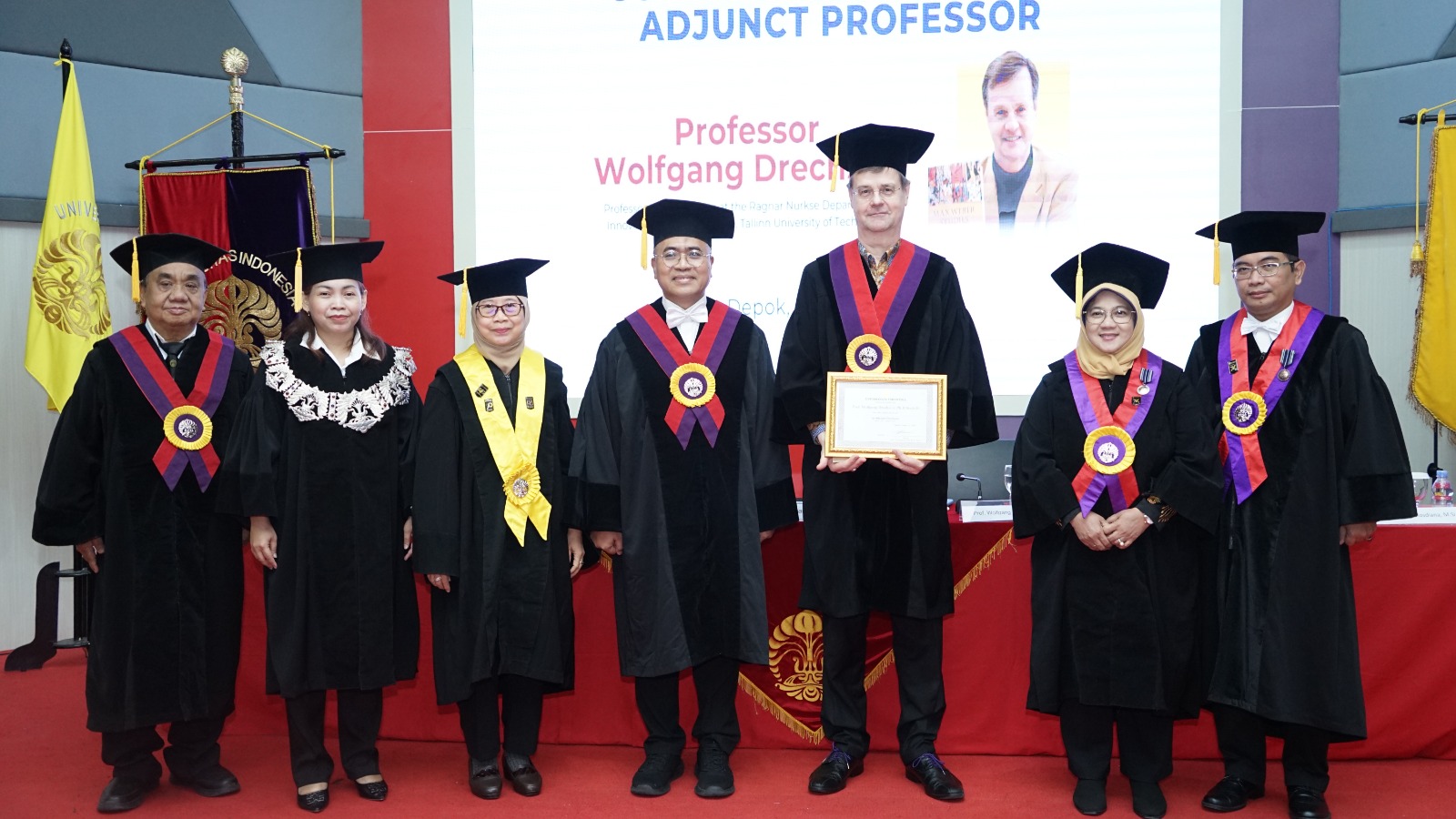The Faculty of Administrative Sciences (FIA) UI held a Public Lecture on the Development of Contemporary Issues in the Implementation of Strategic Planning in the Public Sector, Wednesday (16/3/2022) at 14.00 to 16.30 WIB.
The event started with the introduction of the FIA UI video screening of the FIA UI profile. Then followed by a discussion session and presentation of material from the speakers. This webinar was moderated by Drs. Muh Azis Muslim, M.Si or often called Pak Azis who is a general manager at the Faculty of Administrative Sciences, University of Indonesia as well as an active researcher on issues of public strategic planning. Mr. Azis started the discussion by giving remarks to the webinar participants, guests, and resource persons.
“I would like to welcome every colleague who is willing to attend this webinar. Today’s theme is an important thing to discuss, especially considering the development of policy products taken by the government. Of course, this is very relevant to the discussion at the FIA, so this is an important lecture,” he said.
After that, Mr. Azis welcomed and introduced the resource persons, namely
Director of Higher Education, Science and Technology Tatang Muttaqin, S.Sos., M.Ed., Ph.D at the National Development Planning Agency (Bappenas). In addition, the man who is often called Pak Tatang is also an active writer and has successfully released several books.
The event then continued with the delivery of material by Mr. Tatang which began by explaining the meaning of the National development planning system as contained in Law No. 5 of 2004, namely the National development planning system is a unified development planning procedure to produce long-term, long-term development plans. medium and annual terms carried out by elements of state and community administrators at the regional center level.
“There are four public planning approaches, namely political considerations, participatory processes, technopractical processes, and Button-UP and Top-Down processes. And the stages of national development planning consist of a cycle, namely the preparation of the plan, the determination of the plan, the control of the implementation of the plan, and the evaluation of the implementation of the plan,” he said.
Pak Tatang emphasized that a public plan will run smoothly if there is an appropriate integration of funding or budget funds so that the desired priority goals can be achieved. Furthermore, Mr. Tatang explained about the position of HR in the era of disruption where there were various changes in government governance due to technology and other factors. In this era of disruption, added Pak Tatang, there are various development challenges, namely digital governance, data-based policies, open government, cultural shifts, and regional orientation.
“To overcome the disruption, ASN is needed who has broad knowledge, high potential and performance, is adaptive to ICT, and has a medium and long-term perspective as bureaucratic cadres and the driving force behind the wheels of development,” he said.
Pak Tatang explained that apart from ASN, universities must also take part and play a role in public sector planning. Where the public administration and development administration occupy a high position in planning so that public sector strategic planning becomes a joint work between the government and universities. Pak Tatang emphasized that universities are expected to produce actors for development in accordance with public needs.
Then the event continued with a one hour question and answer session. Of the more than 190 participants who attended, many of them asked questions for discussion. One of the interesting questions came from a student of public administration at FIA UI, namely Kania Fahalitika Hidaya who asked about the number of innovations and research in Indonesia which was stagnant and even decreased.
“As we know, innovation and research are the keys to successful planning and development. However, recently the number of innovations and research in Indonesia is in a stagnant position from 2018, even declining in 2021. The number of researchers in Indonesia is also relatively small compared to the population and the proportion of the budget for research with GDP is very small. What are the root causes and how can we encourage this increase in research and innovation?
Mr. Tatang firmly answered the question.
“Currently, innovation is stagnant. However, in terms of the research budget, the proportion of GDP is low, but the amount is large, which is almost 30 trillion. It’s just that the utilization is scattered so that it is rather difficult to produce innovative and innovative products that are able to compete in the market. Now we are preparing PT PP for the advancement of science and technology which has implications for research institutions in Indonesia,” he replied.
